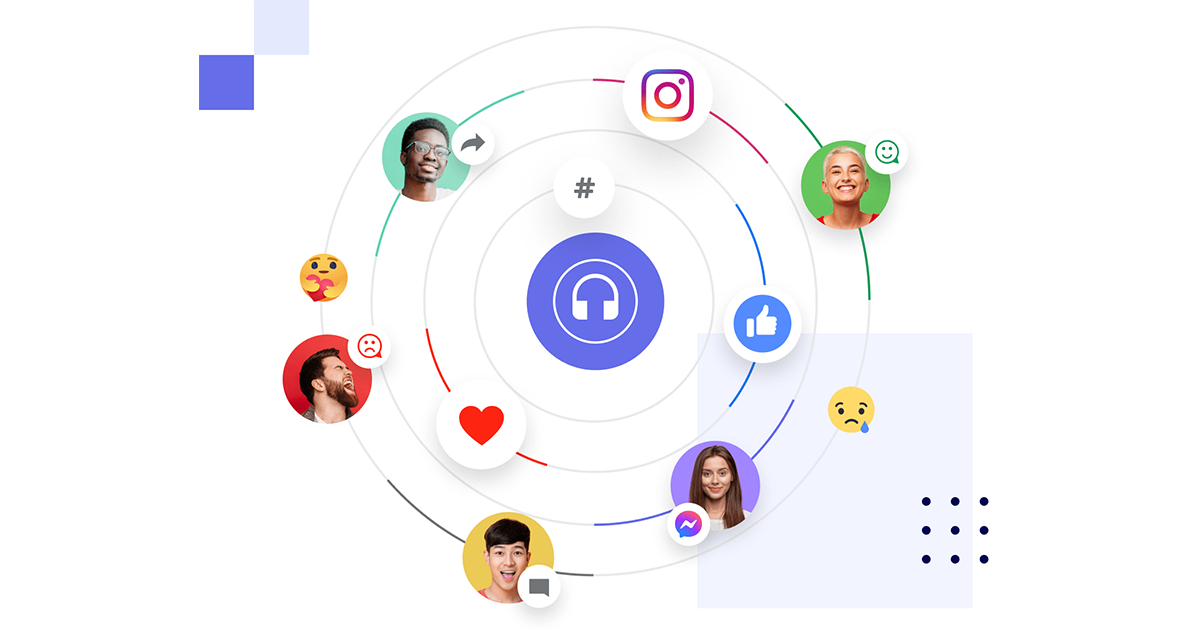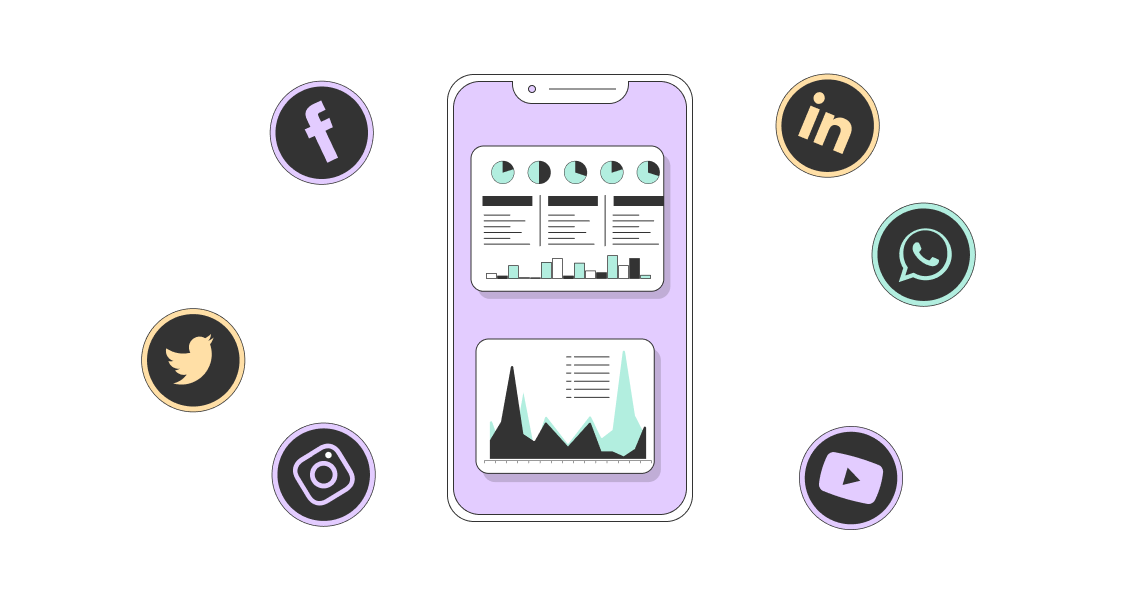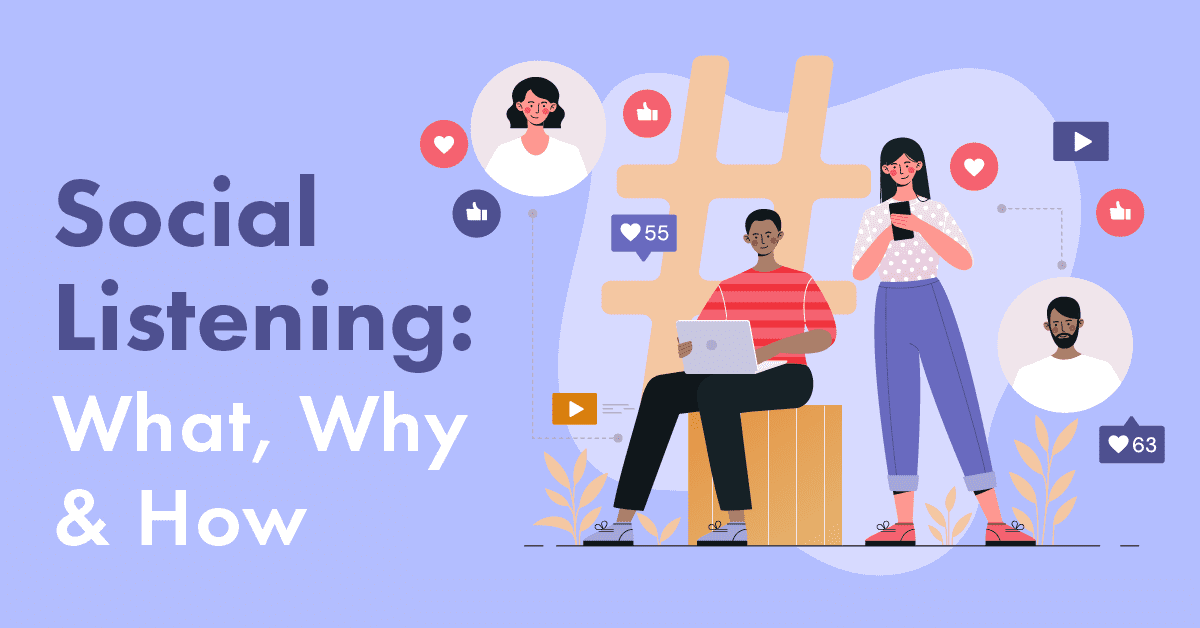In today’s digital age, social media has become a powerful tool for businesses to connect with their audience, build brand awareness, and drive engagement. However, simply having a presence on social media platforms is not enough. To truly understand and respond to the needs and preferences of their target audience, businesses need to go beyond posting content and actively listen to what their customers are saying. This is where social media listening comes into play. In this article, we will explore what is social media listening, how its works, and social listening tools.
What is Social Media Listening: Unlocking Insights and Driving Business Success

Social media listening, also known as social media monitoring or social media intelligence, refers to the practice of monitoring and analyzing conversations, mentions, and trends across various social media platforms. It involves actively tracking and gathering data on what people are saying about a brand, product, service, or industry, and extracting valuable insights to inform business strategies and decision-making processes.
Understanding Social Media Listening
Social listening goes beyond simply monitoring brand mentions or tracking hashtags. It involves a deeper level of analysis and understanding of the conversations happening online. By actively listening to social media conversations, businesses can gain valuable insights into consumer sentiment, preferences, pain points, and emerging trends.
The Importance of Social Listening
Social media listening is crucial for businesses of all sizes, as it provides several key benefits:
a) Customer Insights
By monitoring social media conversations, businesses can gain a deeper understanding of their customers’ needs, preferences, and expectations. This valuable customer insight can help shape marketing strategies, product development, and customer service initiatives.
b) Brand Reputation Management
Social media listening allows businesses to track and manage their brand reputation effectively. By promptly addressing customer concerns, complaints, or negative sentiment, companies can protect their brand image and maintain customer trust.
c) Competitive Intelligence
Social media listening also enables businesses to monitor their competitors’ activities, promotions, and customer feedback. This information can be leveraged to identify gaps in the market, understand competitor strategies, and gain a competitive edge.
d) Crisis Management
In times of crisis or public relations emergencies, social media listening plays a critical role. By monitoring conversations and sentiment during such situations, businesses can respond quickly, mitigate negative impacts, and regain control of the narrative.
How Social Monitoring Works
Social media listening involves several steps to gather and analyze data effectively:
a) Setting Objectives
Businesses need to define their goals and objectives for social media listening. This could include tracking brand mentions, monitoring industry trends, identifying influencers, or tracking customer sentiment.
b) Choosing Relevant Platforms
Identify the social media platforms that are most relevant to your business and target audience. This could include popular platforms like Facebook, Twitter, Instagram, LinkedIn, YouTube, or industry-specific forums and blogs.
c) Defining Keywords and Queries
Develop a list of relevant keywords, hashtags, and queries to track and monitor. These should include variations of brand names, product names, industry terms, and related topics.
d) Using Social Media Listening Tools
Leverage social listening tools and platforms to gather and analyze data effectively. These tools provide real-time monitoring, sentiment analysis, competitive analysis, and reporting features to streamline the process.
e) Analyzing and Extracting Insights
Once data is collected, businesses need to analyze the information gathered, identify patterns, sentiments, and emerging trends. Extracting actionable insights allows businesses to make informed decisions and take appropriate actions.
Social Media Listening Tools

There are numerous tools and techniques available to assist businesses in their social media listening efforts. Some popular tools include:
a) Brand Monitoring Tools
These tools help track brand mentions, hashtags, and relevant keywords across multiple social media platforms.
b) Sentiment Analysis Tools
Sentiment analysis tools analyze the tone and sentiment of social media conversations to gauge customer sentiment towards a brand or topic.
c) Influencer Tracking Tools
Influencer tracking tools identify and monitor influential individuals who can impact brand perception and reach.
d) Social Listening Dashboards
Social listening dashboards provide real-time monitoring and analytics, allowing businesses to track conversations, trends, and engagement metrics across social media platforms.
Leveraging Social Monitoring for Business Success
To leverage the power of social media listening effectively, businesses should consider the following strategies:
a) Engage with Customers
Respond promptly and genuinely to customer feedback, inquiries, and complaints. Show customers that their opinions are valued and that their concerns are being addressed.
b) Identify Opportunities
Monitor conversations related to your industry and identify emerging trends or gaps in the market. Use this information to develop new products, improve existing offerings, or tailor marketing campaigns.
c) Influencer Partnerships
Leverage social media listening to identify influencers and build partnerships that can amplify brand reach and credibility.
d) Crisis Management
Monitor social media conversations during crises or PR emergencies and respond swiftly and transparently to mitigate any negative impacts.
Best Practices for Effective Social Listening
To maximize the effectiveness of social listening, businesses should follow these best practices:
a) Set Clear Goals and Objectives
Define specific goals and objectives for social listening to ensure that efforts are focused and aligned with business objectives.
b) Monitor Multiple Platforms
Don’t limit social listening to a single platform. Monitor conversations and engage with your audience across various platforms to gain a comprehensive understanding of customer sentiment.
c) Regularly Evaluate and Refine
Continuously evaluate the effectiveness of your social media listening efforts. Refine your keyword lists, queries, and monitoring techniques to stay relevant and responsive.
d) Leverage Automation and AI
Utilize automation and AI-powered tools to streamline data collection, analysis, and reporting. This saves time and enables businesses to focus on interpreting insights and taking action.
Challenges and Limitations
While social listening provides valuable insights, it is essential to be aware of its challenges and limitations:
a) Data Overload
The sheer volume of data generated on social media can be overwhelming. Businesses must have strategies in place to filter, prioritize, and analyze relevant data effectively.
b) Misinterpretation of Sentiment
Sentiment analysis tools may not always accurately interpret the tone or context of social media conversations. Human analysis and interpretation are still required to validate and contextualize sentiment.
c) Privacy and Ethical Concerns
Social listening raises concerns about data privacy and ethical considerations. Businesses must adhere to data protection regulations and ensure responsible use of customer data.
Future Trends
As social media platforms and user behavior continue to evolve, social listening will become even more crucial for businesses. Some future trends in social media listening include:
a) Advanced AI and NLP
Advancements in artificial intelligence (AI) and natural language processing (NLP) will enhance sentiment analysis, topic categorization, and data interpretation capabilities.
b) Real-Time Insights
Real-time monitoring and analysis will become more prevalent, allowing businesses to respond quickly to emerging trends and customer conversations.
c) Integration with CRM Systems
Integration with customer relationship management (CRM) systems will enable businesses to consolidate customer data and enhance personalized marketing and customer service experiences.
Conclusion
Social media listening is a powerful tool that empowers businesses to gain valuable insights into their customers, industry trends, and brand perception. By actively listening to social media conversations, businesses can make informed decisions, improve customer experiences, and drive business success in the digital age.
If you’re ready to unlock the full potential of social media listening for your business, request a demo from AIM Technologies today. Our cutting-edge platform combines advanced analytics and AI-powered tools to help you extract actionable insights from social media data. Don’t miss out on the opportunity to stay ahead of the competition and connect with your audience on a deeper level.
FAQs
Q1: Can social listening be used for small businesses?
- Yes, social listening is beneficial for businesses of all sizes, including small businesses. It helps them understand their target audience, monitor brand reputation, and identify growth opportunities.
Q2: What are some popular social listening tools?
- Some popular social listening tools include AIM Insights, Brandwatch, Sprout Social, Mention, and Talkwalker.
Q3: How often should businesses engage with their audience on social media?
- Regular engagement is important to maintain a strong presence on social media. Businesses should aim to respond promptly to customer inquiries, comments, and complaints.
Q4: Is social listening only for monitoring brand mentions?
- No, social listening goes beyond monitoring brand mentions. It involves tracking conversations, analyzing sentiment, identifying trends, and gaining insights into customer preferences and industry dynamics.
Q5: How can social listening contribute to product development?
- Social listening provides businesses with valuable customer feedback and insights. By understanding customer needs and preferences, businesses can develop products that better meet their customers’ expectations.




